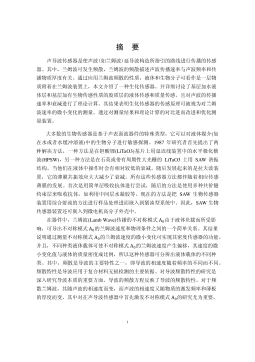交通投资与经济增长的关系研究——以上海市为例
摘要交通是国民经济的基础行业,对整个社会经济起着骨架和血管的作用,支撑其他产业发展,疏导各行业、各区域间人与物质的流通。交通投资是否得当,直接关系到整个社会的经济、生产与生活能否正常运行。因此,交通投资和经济增长一直以来都是经济学家和学者们热衷探讨的话题。由于选取对象和运用方法的不同,学者们得出的结论往往差别很大。由于中国经济的特殊性,要搞清楚中国交通投资和经济增长的关系,就必须以中国为研究对象,进行有针对性的研究。本文在充分分析我国交通投资和经济增长的历史与现状的基础上,总结国内外学者的研究成果,以上海市为例,运用计量经济学方法对上海的交通投资与经济增长的关系进行了深入的实证分析。通过协整检...
相关推荐
-
10KV电网D-SCADA 系统信息采集与故障诊断研究与设计VIP免费

 2024-10-14 53
2024-10-14 53 -
方形吸顶散流器平送风等温射流特性研究VIP免费

 2025-01-09 12
2025-01-09 12 -
关于充液声导波传感器中频散兰姆波的研究VIP免费

 2025-01-09 21
2025-01-09 21 -
结合梁斜拉桥施工过程中考虑剪力滞影响的分析方法VIP免费

 2025-01-09 29
2025-01-09 29 -
空调房间热舒适性的数值模拟与实验研究VIP免费

 2025-01-09 9
2025-01-09 9 -
汽车前轮线控转向系统研究VIP免费

 2025-01-09 19
2025-01-09 19 -
输入分配型混合动力车辆动力系统控制策略研究VIP免费

 2025-01-09 9
2025-01-09 9 -
双馈风力发电系统的柔性并网控制研VIP免费

 2025-01-09 37
2025-01-09 37 -
污水处理厂污泥好氧堆肥发酵技术的试验研究VIP免费

 2025-01-09 11
2025-01-09 11 -
应用风室试验装置的风机性能VIP免费

 2025-01-09 13
2025-01-09 13
相关内容
-

汽车前轮线控转向系统研究
分类:高等教育资料
时间:2025-01-09
标签:无
格式:PDF
价格:15 积分
-

输入分配型混合动力车辆动力系统控制策略研究
分类:高等教育资料
时间:2025-01-09
标签:无
格式:PDF
价格:15 积分
-

双馈风力发电系统的柔性并网控制研
分类:高等教育资料
时间:2025-01-09
标签:无
格式:PDF
价格:15 积分
-

污水处理厂污泥好氧堆肥发酵技术的试验研究
分类:高等教育资料
时间:2025-01-09
标签:无
格式:PDF
价格:15 积分
-

应用风室试验装置的风机性能
分类:高等教育资料
时间:2025-01-09
标签:无
格式:PDF
价格:15 积分






